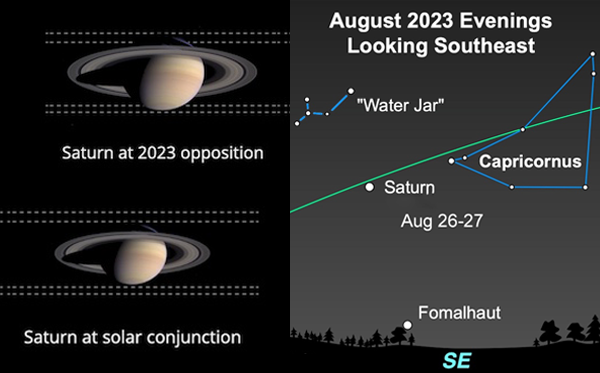From the dawn of human civilization, the Moon has held a special place in our collective imagination, inspiring metaphors, poems, songs, and more. We will focus on one of the periodic phenomena i.e., Lunar Eclipse. This summer on 25th March, 2024 7:13 UTC, we will be experiencing a celestial event : the Penumbral Lunar eclipse. Unlike its counterparts, its occurrence has been quite irregular throughout history; the last Penumbral Lunar eclipse was observed on 5th May 2023 17:23 UTC. we will understand more about Lunar eclipses, its terminologies, and whether it is possible to observe this eclipse in India and so on.
About Lunar Eclipse
Throughout human culture, Lunar Eclipses have been viewed with awe and sometimes fear. However, most of us know that the Lunar Eclipse occurs when the full moon passes through the darkest part of the Earth’s shadow, the umbra. Near the beginning and ending of an eclipse, the moon moves through a less dark portion of the shadow, called the penumbra, which is hardly visible. The partial phase begins when the moon enters the umbra. When the moon has completely passed into Earth’s shadow, the eclipse is in its total phase.
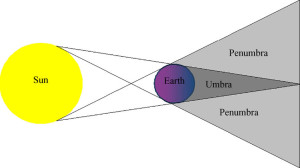
Conditions for Penumbral Lunar Eclipse
Full moon
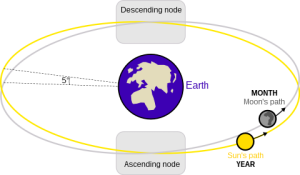
Lunar eclipses only occur during Full Moon.However, It is important to note that lunar eclipses do not occur every full moon night. The plane of the Moon’s orbit around the Earth is inclined at an angle of 5° to the Earth’s orbital plane around the Sun, the ecliptic. The points where the two orbital planes meet are called lunar nodes. Lunar eclipses can only take place when a Full Moon occurs near a node.
![Different conditions for eclipse to actually happen and n]lunar nodes](https://stargazingmumbai.in/wp-content/uploads/2024/03/Eclipse_vs_new_or_full_moons_annotated.svg_-300x151.png)
Imperfect alignment
The length of the eclipse is dependent on the position of the moon along an Earth-sun line. The longest eclipses occur when the moon is directly in line with Earth and sun. The shortest eclipses are when the moon is either above or below that line.
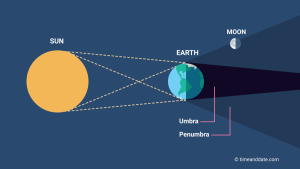
Observing Penumbral Lunar Eclipse
The moon does not make its own light; it only reflects the light it receives from the sun. During a lunar eclipse, the moon appears less and less bright as sunlight is blocked by Earth. As totality approaches, more and more of the sunlight reaching the moon does so indirectly; it is refracted around the “edges” of Earth, through our atmosphere.
Because the light is going through the Earth’s atmosphere, almost all colors except red are “filtered” out and the eclipsed moon appears reddish or dark brown. The filtering is done by particulates in the atmosphere; when there have been a lot of fires and/or volcanic eruptions, lunar eclipses will be darker and redder. This eerie but harmless effect has earned the tongue-in-cheek nickname “blood moon.”

Because Earth’s penumbral shadow is light, it can be hard to spot as it moves across the face of the Moon. The best time to try and catch it is around maximum eclipse, when one edge of the Moon may appear slightly darker than the other.
If a person was standing on the Moon’s surface during a penumbral lunar eclipse, they would see Earth block out some—but not all—of the Sun. (From their perspective on the Moon, they would see a partial solar eclipse.)
Finally, we arrive at an important question: Whether we can observe the Penumbral Lunar Eclipse from India? The Moon will pass through the Earth’s shadow between 10:23 and 15:02 IST, creating a penumbral lunar eclipse. The eclipse will be visible any location where the Moon is above the horizon at the time, including from the Americas, Antarctica, Alaska and north-eastern Russia.
Unfortunately, It will not be visible from India since the Moon will be beneath the horizon at the time. Maximum eclipse will occur at 12:43. Check Timeanddate.com to find out the exact eclipse timing at your location.
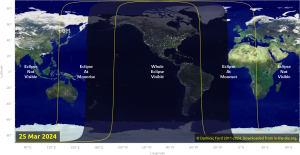
Despite this shocking revelation, we should look forward to the solar eclipse which is bound to occur after a lunar eclipse on 8th April, 2024. Furthermore, the next Penumbral lunar eclipse will occur on 20th February 2027 which is going to be visible from India. Also Explore our exciting upcoming Events and stay updated with our latest Newsletter!
ENJOYED READING THIS? CONSIDER READING
- Top 6 Places in India with best night sky for stargazing and astrophotography
- Spiti Valley: A Paradise For Every Astrophile
- Why Stargazing is good for you? Best recreational activity
-
How to spot Milky-Way band in the night sky? Milky Way Galaxy, Milky Way Band, Night Sky

